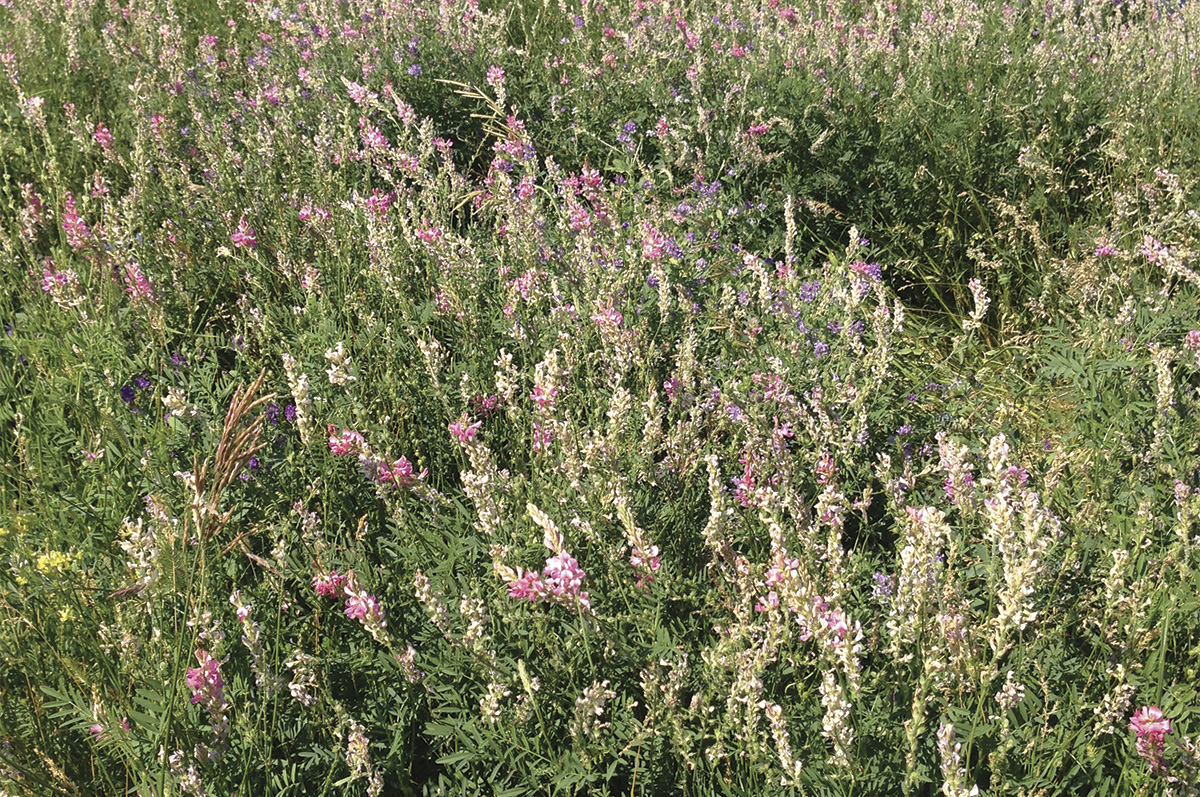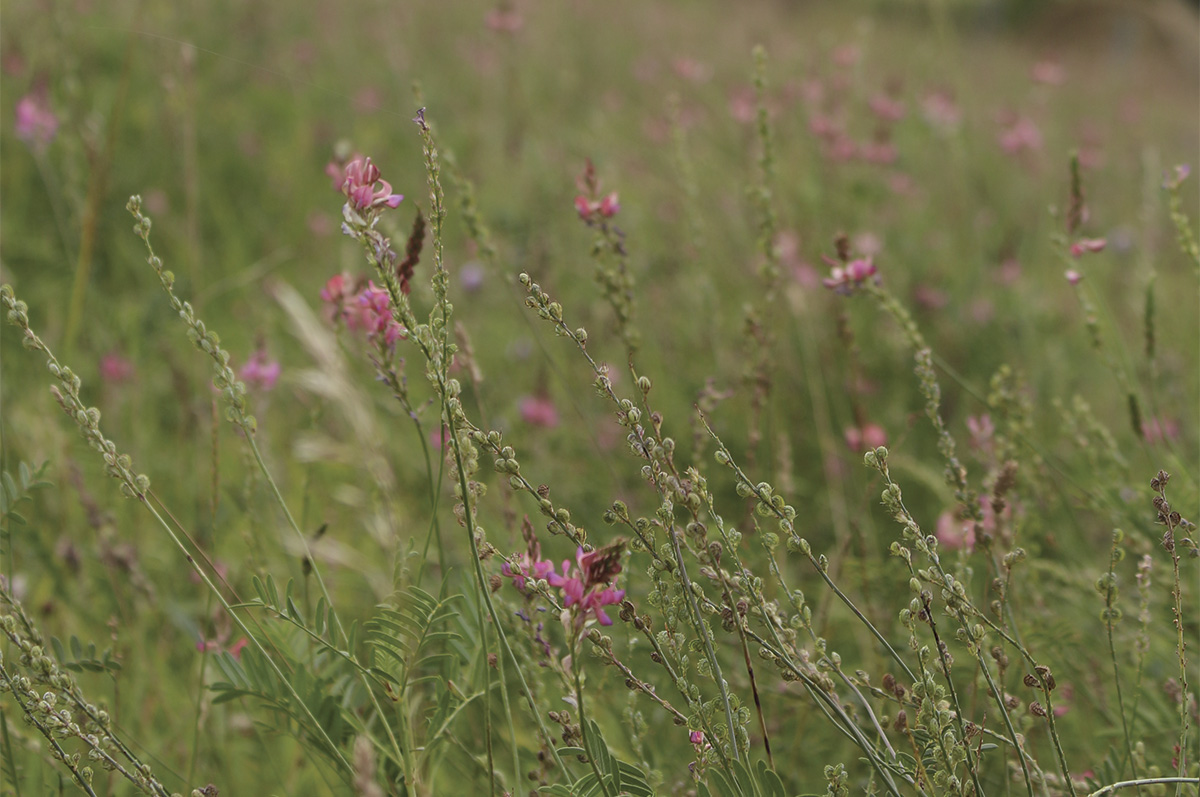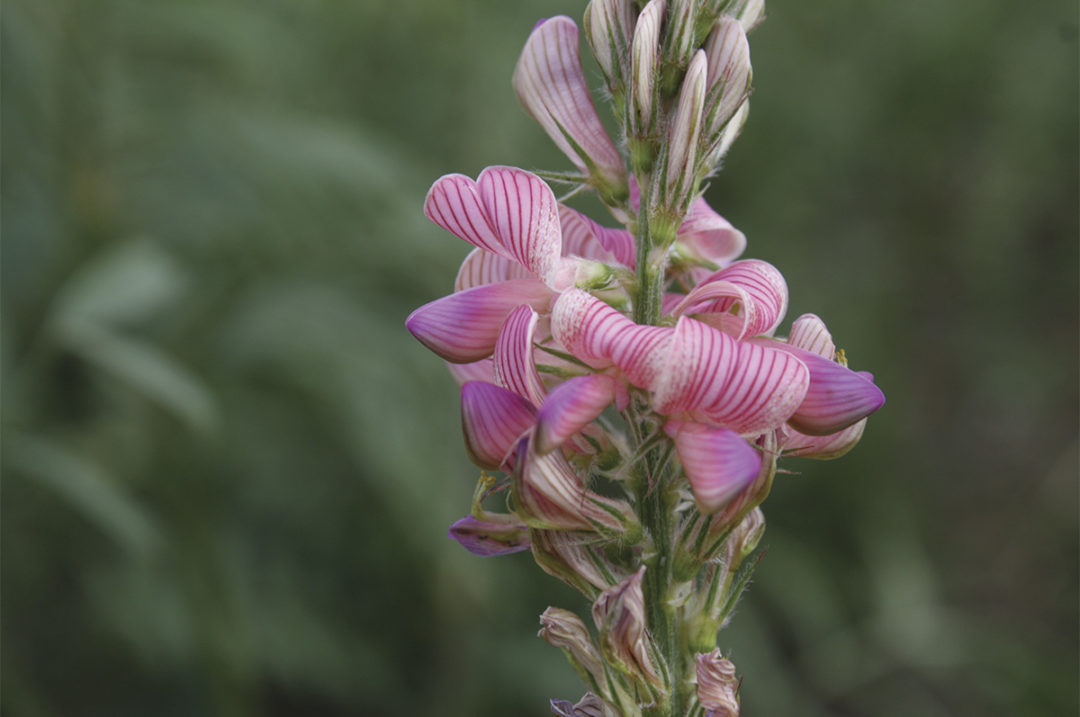Legumes are always beneficial in a pasture because they generally contain more protein and minerals than grasses and add nitrogen to the soil, but some commonly used legumes – alfalfa and some clovers – carry risk for bloat.
A non-bloating legume that has had a lot of study lately for livestock forage is sainfoin. Grant Lastiwka (originally a forage/livestock business specialist with Alberta Agriculture and now with Union Forage), has been studying various forages in grazing systems for a long time. “Eleven years ago, we started working with a new sainfoin variety and asked producers grazing higher-legume pastures to keep their beef and pasture financial records. We also worked with several applied research and forage associations in seeding sainfoin-alfalfa mixtures in small plot trials,” he says.
After three years of data collection from these plots and producer data from regular and higher-legume mix pastures, the outcomes were favorable; most higher-legume pastures were significantly more productive and profitable than just grass pastures. “Several producers wanted to be part of the next step of this research; we had 12 sites (about 10 acres each) seeded in Alberta, and one in British Columbia, with a mix of sainfoin, alfalfa and grasses,” says Lastiwka.
“We looked at new sainfoin cultivars and the different varieties’ ability to regrow, compared with alfalfa. Because sainfoin can set seed so easily, it has the ability to create a soil seedbank. There is opportunity for regeneration from seed,” he says. If a producer lets sainfoin go to seed now and then, there is less need to reseed a pasture.
The main problem with sainfoin is its large seed, almost seven times larger than alfalfa seed. “It has only about 30,000 seeds per pound versus 200,000 seeds per pound with alfalfa. When buying seed and wanting sainfoin to be a large part of a total mix, most producers balk at paying that much money for seed,” says Lastiwka.
“The seed industry puts percent of total seed weight of each component of a mixture on the bag label. If the label says 50 percent sainfoin, because of sainfoin’s large seed size, this translates into only about 20 percent of a stand [being] sainfoin because those seeds are so large,” he explains.

If allowed to reseed itself, sainfoin will easily maintain or even increase in a stand of hay or pasture. Photo by Grant Latstiwka.
If allowed to reseed itself, however, sainfoin will easily maintain or even increase in a stand of hay or pasture – if given a long enough recovery to go to seed. “If regrowth is grazed, the grazing activity of cattle consuming and defecating viable seed can spread the seeds (or trample them into the soil) as another planting,” says Lastiwka. On his own farm, he’s established sainfoin by feeding it to cattle in mineral mixes. The seed is still viable after going through the rumen.
Andrea Hanson, former beef extension specialist at Alberta Agriculture and Forestry and now with Lakeland College, was part of that project and worked with producers and applied research and extension associations across Alberta. “The first year we established sainfoin as part of a high-legume pasture mix at 12 sites, and the second year those sites were grazed. Some producer cooperators had very good establishment the first year, while others did not – either because of too much or too little moisture, weeds or other reasons,” she says.
“Grazing the second year provided a variety of outcomes. Producers with forage establishment from the first year were able to graze effectively. Sainfoin reduces risk for bloat, even in pastures that also have alfalfa, because sainfoin contains tannins that bind excess plant protein. The tannins precipitate these excess proteins out of the rumen fluid, preventing creation of stable foam that forms in pasture bloat,” explains Hanson.
Many producers have had bad experiences with alfalfa and bloat, but with sainfoin added to a pasture, this risk is greatly reduced. Grazing research has shown there’s up to 98% reduction in bloat when sainfoin makes up at least 25% of a sainfoin/alfalfa stand.
“With weather unpredictability, having a diversified stand allows different plants to thrive in different conditions, and we get more drought resistance. Legumes have a deep tap root and can penetrate deeper into the soil where there is more moisture. Poor-producing pastures with few or no legumes have risk of depletion earlier in the grazing season.” Without legumes, you may have less pasture and less quality forage for cattle.
“The sainfoin we used for this project has a growth pattern like alfalfa and can withstand grazing better than previous varieties. A concern with sainfoin in the past is that it would be grazed out too quickly, and then the risk for bloat is back again with the alfalfa that remains,” she explains. This new variety of sainfoin is better for grazing.
“Our focus in this project was to have 60 percent or more legumes and 40 percent other forage species. Cooperating producers chose whatever else they wanted to put with the legumes – grasses or more legumes like birdsfoot trefoil or alfalfa,” she says.
“From grazing experience, one of the most notable observations was importance of seed set for longevity of high-legume forage stands – the need for some recovery time and regrowth – for natural reseeding. The 2017 growing season was really dry in parts of Alberta until fall. One site was left ungrazed by the producer until fall, so there was seed set and germination.” Under the right conditions, sainfoin will reseed itself.

A pasture with sainfoin included reduces the chances of bloat. Photo by Andrea Hanson.
One rancher's preference
Jack Holden of Valier, Montana, raises registered Herefords and prefers sainfoin over alfalfa in his pastures and hay. “We’ve had sainfoin mixes – with orchardgrass and bromegrass – since 1965. My dad wrote his master’s thesis on sainfoin and helped with development of the seed when it first came from Turkey to Montana State University. He brought some of that seed home; we were one of the first ranches to use it,” Holden says.
“We have enough hay ground that we can put up most of the hay we need with one cutting and graze the regrowth. On our soil, sainfoin lasts much longer than alfalfa. We have some stands that are more than 40 years old, still producing about 3 tons per acre on the first cutting, but we generally rotate them out every 12 to 18 years,” he says.
Some people have trouble keeping sainfoin stands going for more than a few years, but his ranch has perfect soil for it. “We have gravelly, well-drained soils, with ideal conditions for this plant. Sainfoin works phenomenally well in the right conditions but dies out quicker in heavier soil,” Holden says.
“Our newer stands produce 4-plus tons on one cutting, and we do second cuttings on some of it, but mostly we graze the regrowth for our fall pasture. We don’t have to worry about bloat, like you do with alfalfa. The sainfoin is also more palatable. Cattle walk away from our alfalfa-grass mix hay, if we are feeding it, to eat sainfoin hay.”










